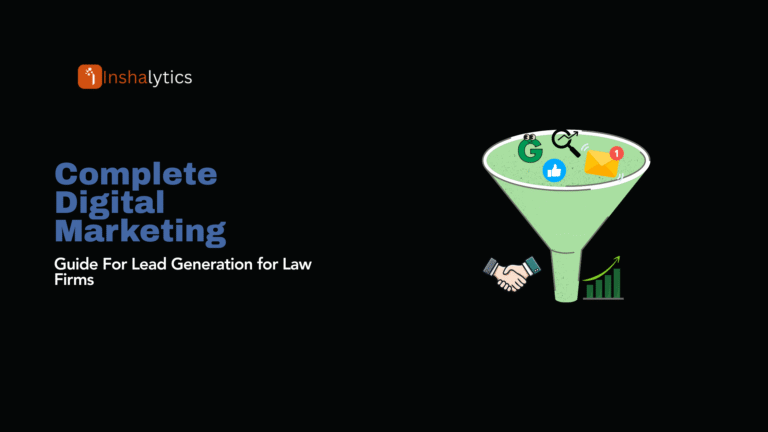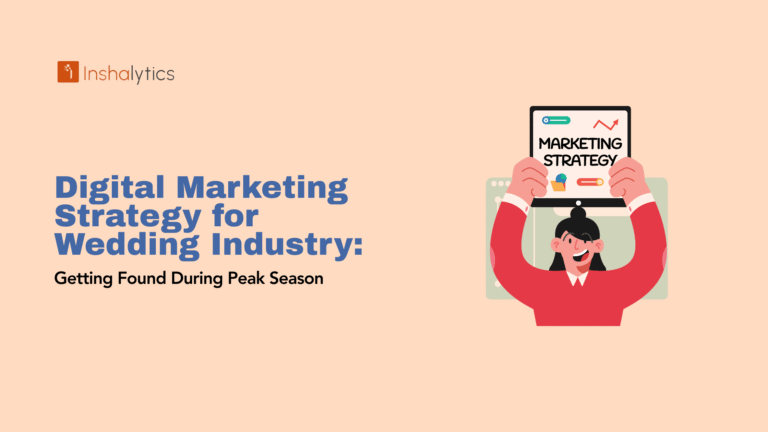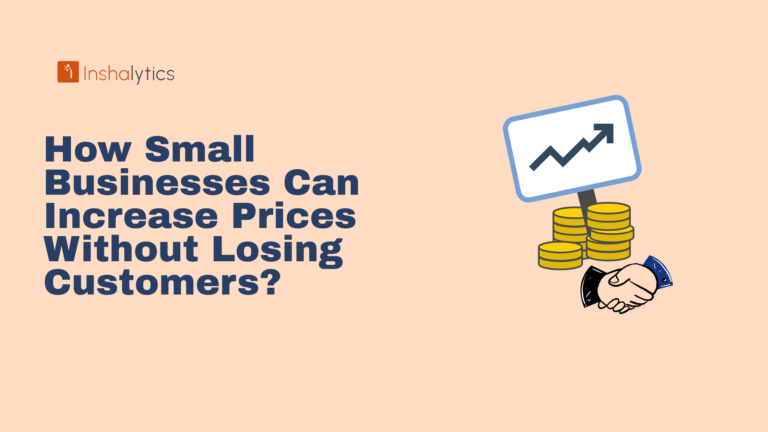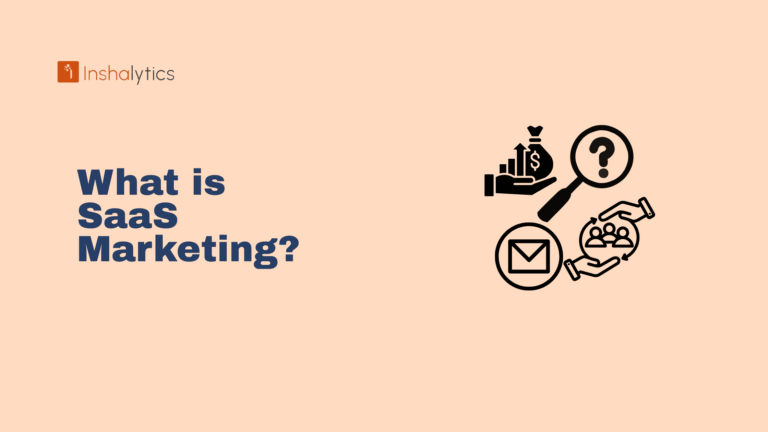Email marketing automation has become the backbone of successful digital marketing strategies, delivering an average ROI of $36 for every dollar spent. For small businesses struggling to compete with larger corporations, automation levels the playing field by enabling personalized, timely communication at scale without requiring a massive marketing team.
Unlike traditional email blasts that treat every subscriber the same, email marketing automation creates intelligent workflows that respond to customer behaviors, preferences, and lifecycle stages. This targeted approach transforms casual subscribers into loyal customers while freeing up valuable time for business owners to focus on growth.
What Is Email Marketing Automation?
Email marketing automation uses software to send targeted emails based on specific triggers, behaviors, or predefined schedules. Instead of manually crafting and sending individual emails, businesses create automated workflows that deliver the right message to the right person at precisely the right moment.
The Critical Difference for Small Businesses:
While large corporations have dedicated marketing teams managing complex campaigns, small businesses need efficient systems that work without constant oversight. Email automation provides this efficiency by:
- Scaling Personal Communication: Maintain personalized relationships with hundreds or thousands of customers simultaneously
- Recovering Lost Revenue: Automatically re-engage customers who abandon purchases or become inactive
- Nurturing Leads Consistently: Guide prospects through your sales funnel with strategically timed content
- Maximizing Customer Lifetime Value: Keep existing customers engaged with relevant offers and updates
The Business Impact:
Companies using marketing automation see 451% more qualified leads and experience 80% increases in leads when implementing automated email campaigns. For small businesses operating with limited resources, these improvements can be transformational.
Modern email automation integrates seamlessly with comprehensive digital marketing strategies, amplifying the effectiveness of SEO efforts, social media campaigns, and paid advertising initiatives.
5 Types of Email Automation Every Small Business Should Use
Welcome emails generate 320% more revenue per email than promotional campaigns, making them essential for small business success. A strategic welcome series introduces new subscribers to your brand while setting clear expectations for future communications.
Essential Welcome Series Components:
- Immediate Welcome: Confirm subscription and deliver promised lead magnets
- Brand Story Email: Share your mission, values, and unique selling proposition
- Social Proof Showcase: Highlight customer testimonials and success stories
- Product/Service Introduction: Guide subscribers toward your core offerings
- Engagement Activation: Encourage social media follows and website exploration
Abandoned Cart Recovery Campaigns
With average cart abandonment rates exceeding 70%, automated recovery campaigns represent immediate revenue opportunities. These workflows target customers who showed purchase intent but didn’t complete their transactions.
High-Converting Recovery Sequence:
- First Email (1 hour delay): Gentle reminder with product images and easy checkout link
- Second Email (24 hours): Address common concerns and include customer reviews
- Third Email (72 hours): Create urgency with limited-time incentives or stock alerts
Post-Purchase Follow-Up Sequences
Customer acquisition costs 5-25 times more than retention, making post-purchase automation crucial for small business profitability. These sequences transform one-time buyers into repeat customers while gathering valuable feedback.
Strategic Follow-Up Timeline:
- Order Confirmation: Immediate reassurance with clear delivery expectations
- Shipping Updates: Proactive communication building anticipation
- Delivery Confirmation: Ensure satisfaction and provide support resources
- Usage Tips: Help customers maximize product value with helpful content
- Review Requests: Gather social proof while the experience remains fresh
- Repurchase Prompts: Suggest complementary products or replacement cycles
Re-Engagement Campaigns for Inactive Subscribers
Inactive subscribers represent missed opportunities and potential deliverability issues. Re-engagement campaigns identify disengaged contacts and either reactivate their interest or remove them from your list.
Effective Re-Engagement Strategy:
- Segment Inactive Users: Identify subscribers who haven’t engaged in 60-90 days
- Value-First Approach: Offer exclusive content, discounts, or insights
- Preference Updates: Allow subscribers to modify email frequency or topics
- Win-Back Incentives: Provide compelling reasons to remain subscribed
- Sunset Campaigns: Gracefully remove unresponsive contacts to protect deliverability
Birthday and Anniversary Automations
Personal milestone emails generate 481% higher transaction rates than standard promotional messages. These campaigns demonstrate genuine care for customers while creating natural purchase opportunities.
Milestone Automation Ideas:
- Birthday Celebrations: Exclusive discounts or free products
- Purchase Anniversaries: Remind customers of their first purchase
- Subscription Milestones: Celebrate loyalty with special recognition
- Seasonal Preferences: Personalized offers based on past purchase patterns
How to Set Up Email Marketing Automation?
Selecting the right platform forms the foundation of successful email automation. Small businesses need solutions that balance functionality with ease of use while remaining cost-effective as subscriber lists grow.
Essential Platform Features:
- Visual Workflow Builder: Drag-and-drop interface for creating automation sequences
- Segmentation Capabilities: Ability to target specific subscriber groups
- Integration Options: Connections with existing business tools and platforms
- Analytics Dashboard: Comprehensive reporting on campaign performance
- Deliverability Tools: Features that protect sender reputation and inbox placement
Popular Small Business Options:
- Mailchimp: User-friendly interface with strong automation features
- ConvertKit: Creator-focused platform with advanced segmentation
- ActiveCampaign: Comprehensive automation with CRM integration
- Klaviyo: Powerful ecommerce-focused automation tools
When evaluating platforms, consider how email automation fits within your broader digital marketing ecosystem and choose solutions that integrate seamlessly with existing tools.
Set Up Your First Automation Workflow
Start with high-impact, low-complexity automations that deliver immediate results while you learn the system.
Beginner-Friendly First Workflow:
Step 1: Define Your Trigger: Choose a specific action that initiates the sequence:
- Newsletter subscription
- Product purchase
- Website page visit
- Download completion
Step 2: Map Your Customer Journey: Understand what subscribers need at each stage:
- Awareness: Educational content and brand introduction
- Consideration: Product benefits and social proof
- Decision: Incentives and urgency creation
- Retention: Ongoing value and relationship building
Step 3: Create Email Sequence: Develop 3-5 emails that guide subscribers toward your desired outcome:
- Clear, action-oriented subject lines
- Valuable, relevant content for each message
- Consistent branding and voice
- Strategic calls-to-action
Step 4: Set Timing and Conditions: Establish when emails are sent and under what circumstances:
- Immediate welcome messages
- 24-48 hour delays between educational content
- Logic conditions based on subscriber behavior
Create Email Templates and Content
Consistent, professional email design reinforces brand credibility while streamlined content creation processes save valuable time.
Template Design Essentials:
- Mobile Optimization: 46% of email opens occur on mobile devices
- Clear Hierarchy: Use headings and white space for easy scanning
- Brand Consistency: Include logos, colors, and fonts that match your website
- Strategic CTAs: Place primary actions prominently with contrasting colors
Content Creation Framework:
- Subject Line: Create curiosity while clearly indicating the email’s purpose
- Opening Hook: Address the subscriber’s specific situation or pain point
- Value Delivery: Provide useful information, insights, or solutions
- Social Proof: Include testimonials, reviews, or success stories when relevant
- Clear Next Step: Guide subscribers toward specific, measurable actions
Automation Content Tips:
- Write conversationally as if addressing individual subscribers
- Reference previous interactions or behaviors when possible
- Provide genuine value in every message
- Test different approaches to optimize performance
Test and Optimize Your Campaigns
Continuous testing and optimization separate successful automation campaigns from mediocre ones. Small businesses must maximize every subscriber interaction to compete effectively.
Essential Testing Elements:
- Subject Lines: Compare different approaches to improve open rates
- Send Times: Identify when your audience most actively engages
- Content Formats: Test text-heavy versus image-rich emails
- CTA Placement: Experiment with button positions and messaging
- Email Length: Find the optimal content length for your audience
Optimization Best Practices:
- Test one element at a time for clear results
- Ensure statistical significance before making changes
- Document successful approaches for future campaigns
- Regular performance reviews to identify improvement opportunities
Advanced email automation optimization often benefits from comprehensive digital marketing analysis to understand how email performance connects with overall business objectives.
Best Email Marketing Automation Tools for Small Businesses
Different email automation platforms excel in various areas, making platform selection crucial for long-term success. Small businesses need solutions that grow with their needs while remaining cost-effective.
Evaluation Criteria:
- Ease of Use: How quickly can team members learn and use the platform?
- Automation Capabilities: Does the platform support complex workflows and behavioral triggers?
- Integration Ecosystem: How well does it connect with existing business tools?
- Pricing Structure: Are costs sustainable as subscriber lists grow?
- Support Quality: Is help available when needed?
- Deliverability Reputation: Does the platform maintain a strong sender reputation?
Top Platform Recommendations
For Beginners: Mailchimp
- Intuitive visual automation builder
- Strong template library and design tools
- Comprehensive analytics and reporting
- Free tier for up to 2,000 subscribers
- Extensive integration marketplace
For Content Creators: ConvertKit
- Creator-focused features and workflows
- Advanced segmentation and tagging
- Easy landing page and form creation
- Strong deliverability rates
- Excellent customer education resources
For Advanced Users: ActiveCampaign
- Sophisticated automation workflows
- Built-in CRM functionality
- Advanced behavioral tracking
- Machine learning features
- Comprehensive split testing options
For E-commerce: Klaviyo
- Deep ecommerce platform integrations
- Predictive analytics and recommendations
- Advanced segmentation based on purchase behavior
- Revenue attribution tracking
- Comprehensive abandoned cart features
Integration Considerations
Email automation works best when integrated with your complete digital marketing technology stack. Seamless data flow between platforms enables more sophisticated targeting and personalization.
Critical Integration Points:
- Customer Relationship Management (CRM): Sync contact data and interaction history
- E-commerce Platforms: Track purchase behavior and inventory levels
- Website Analytics: Understand visitor behavior and content preferences
- Social Media Management: Coordinate messaging across channels
- Customer Support Tools: Provide context for service interactions
A professional digital marketing consultation can help small businesses select and integrate tools that work together effectively rather than creating data silos.
Email Automation Best Practices That Drive Results
Generic mass emails achieve mediocre results while targeted, personalized messages generate significantly higher engagement and conversion rates.
High-Impact Segmentation Methods:
- Demographic Segmentation: Age, location, company size, industry
- Behavioral Segmentation: Purchase history, website activity, email engagement
- Lifecycle Stage Segmentation: New subscribers, active customers, at-risk accounts
- Interest-Based Segmentation: Product preferences, content topics, communication frequency
Personalization Beyond Names:
- Reference past purchases or browsing behavior
- Recommend products based on similar customer preferences
- Customize content based on subscriber lifecycle stage
- Adjust messaging tone and complexity for different audience segments
Dynamic Content Implementation:
- Show different product recommendations based on past behavior
- Display location-specific information and offers
- Customize content based on subscription date or customer value
- Personalize images and offers based on demographic data
Timing and Frequency Optimization
Strategic timing can dramatically improve email performance while poor timing ensures messages get buried in crowded inboxes.
Send Time Optimization:
- B2B Audiences: Tuesday-Thursday, 10 AM – 2 PM typically perform best
- B2C Audiences: Evenings and weekends often see higher engagement
- Industry Considerations: Adjust based on when your audience is most active
- Personal Testing: Your audience may differ from general benchmarks
Frequency Balance:
- Start conservatively and increase based on engagement metrics
- Monitor unsubscribe rates as frequency indicators
- Provide preference centers allowing subscribers to choose frequency
- Vary frequency based on subscriber engagement levels and lifecycle stages
Automation Spacing:
- Allow 24-48 hours between educational emails
- Space promotional messages more conservatively
- Consider time zones for global audiences
- Pause automations during major holidays or industry events
Content Quality and Value Delivery
Subscribers grant permission to enter their inboxes expecting valuable, relevant content. Consistently delivering value builds trust and drives long-term engagement.
Value-First Content Strategy:
- Educational Content: How-to guides, industry insights, best practices
- Exclusive Access: Early product announcements, member-only discounts
- Behind-the-Scenes: Company culture, team stories, process insights
- Curated Resources: Industry news, tool recommendations, expert interviews
Content Formatting Best Practices:
- Use scannable formats with clear headings and bullet points
- Include visual elements to break up text blocks
- Write compelling subject lines that accurately preview content
- Maintain consistent brand voice and messaging across all communications
Call-to-Action Optimization:
- Use action-oriented language that creates urgency
- Limit to one primary CTA per email for maximum focus
- Make buttons visually prominent with contrasting colors
- Test different CTA text and placement for optimal performance
Effective email automation content often supports broader digital marketing objectives, driving website traffic that contributes to overall SEO performance and business growth.
Common Email Automation Mistakes
Enthusiasm for automation capabilities can lead to overwhelming subscriber experiences that damage relationships rather than building them.
Warning Signs of Over-Automation:
- Increased unsubscribe rates across multiple campaigns
- Declining email open rates despite growing subscriber lists
- Negative feedback and complaints about email frequency
- Multiple automations are triggering simultaneously for individual subscribers
Prevention Strategies:
- Automation Mapping: Document all active automations to identify potential overlaps
- Frequency Caps: Limit maximum emails per subscriber per week/month
- Priority Systems: Establish hierarchy when multiple automations qualify
- Suppression Lists: Prevent certain automations during specific campaigns
Subscriber Experience Focus:
- Regular audits from the subscriber perspective
- Feedback collection about email preferences and frequency
- Clear expectation setting during the signup process
- Easy preference management and unsubscribe options
Poor Timing and Irrelevant Messaging
Poorly timed or irrelevant automated messages can destroy carefully built subscriber relationships in a single interaction.
Common Timing Mistakes:
- Sending promotional emails immediately after customer complaints
- Birthday emails on incorrect dates due to data errors
- Abandoned cart emails for already-completed purchases
- Welcome series continuing after unsubscribe
Message Relevance Issues:
- Generic content that ignores subscriber preferences
- Product recommendations based on outdated behavior
- Promotional messages for out-of-stock items
- Industry-specific content sent to the wrong segments
Solution Framework:
- Real-Time Data Integration: Ensure automation platforms have access to current customer data
- Behavioral Logic: Build workflows that respond to recent subscriber actions
- Content Personalization: Tailor messages based on demonstrated interests and behavior
- Regular Workflow Review: Audit automations quarterly to identify and fix issues
Neglecting Mobile Optimization
With mobile devices accounting for nearly half of all email opens, mobile optimization directly impacts automation campaign success.
Mobile Optimization Essentials:
- Responsive Design: Templates that adapt to different screen sizes
- Thumb-Friendly CTAs: Buttons large enough for easy mobile interaction
- Concise Subject Lines: Keep under 30 characters for mobile preview visibility
- Single-Column Layouts: Ensure content flows naturally on narrow screens
- Fast-Loading Images: Optimize file sizes for quick mobile loading
Testing Requirements:
- Preview campaigns across multiple devices and email clients
- Test automation workflows on smartphones and tablets
- Monitor mobile-specific engagement metrics
- Gather feedback from mobile-focused subscriber segments
Ignoring Analytics and Performance Data
Email automation generates vast amounts of performance data that small businesses often underutilize, missing optimization opportunities that could significantly improve results.
Critical Metrics to Monitor:
- Open Rates: Indicate subject line effectiveness and sender reputation
- Click-Through Rates: Measure content relevance and CTA performance
- Conversion Rates: Track business impact and ROI
- Unsubscribe Rates: Early warning system for subscriber satisfaction issues
- Revenue Attribution: Connect email automation directly to business results
Data-Driven Optimization Process:
- Baseline Establishment: Document current performance across all automations
- Performance Analysis: Identify high and low-performing campaigns
- Hypothesis Development: Create theories about improvement opportunities
- Systematic Testing: Implement changes and measure impact
- Results Documentation: Track successful optimizations for future application
Advanced email automation analytics often integrate with comprehensive digital marketing measurement systems to understand email’s role in complete customer journeys.
Measuring Email Automation Success: Key Metrics and KPIs
Core Performance Indicators
Effective email automation measurement requires tracking metrics that directly connect to business objectives rather than vanity metrics that look impressive but don’t drive growth.
Primary Success Metrics:
Open Rate Benchmarks:
- Welcome emails: 50-80% (significantly higher than regular campaigns)
- Abandoned cart emails: 40-50%
- Re-engagement campaigns: 15-25%
- Regular automation sequences: 20-30%
Click-Through Rate Targets:
- Welcome series: 15-25%
- Product recommendations: 8-15%
- Educational content: 5-10%
- Promotional campaigns: 3-8%
Conversion Rate Goals:
- Abandoned cart recovery: 10-15%
- Welcome series conversions: 5-10%
- Re-engagement success: 2-5%
- Overall automation ROI: 300-500%
Revenue Attribution and ROI Calculation
Understanding email automation’s financial impact enables informed investment decisions and optimization prioritization.
Revenue Tracking Methods:
- Direct Attribution: Sales generated from specific email clicks
- Assisted Conversions: Revenue influenced by email touchpoints
- Customer Lifetime Value Impact: How automation affects long-term customer relationships
- Cost Per Acquisition: Email automation cost compared to other marketing channels
ROI Calculation Framework:
Email Automation ROI = (Revenue Generated – Campaign Costs) / Campaign Costs × 100
Comprehensive Cost Considerations:
- Platform subscription fees
- Design and content creation time
- List management and maintenance
- Integration and setup costs
- Ongoing optimization efforts
Advanced Analytics and Insights
Sophisticated email automation analytics provide insights that enable strategic business decisions beyond basic performance metrics.
Behavioral Analysis:
- Engagement Patterns: When and how subscribers interact with different content types
- Customer Journey Mapping: Understanding paths from subscription to conversion
- Lifecycle Value Tracking: How automation affects customer retention and growth
- Predictive Modeling: Identifying subscribers likely to convert or churn
Integration Analytics:
- Cross-Channel Impact: How email automation supports other marketing efforts
- Website Traffic Analysis: Email-driven visitors and their behavior patterns
- Social Media Amplification: Measuring email content sharing and engagement
- Customer Support Correlation: How email automation affects support ticket volume
Competitive Benchmarking:
- Industry-specific performance comparisons
- Best practice identification from high-performing campaigns
- Seasonal trend analysis and planning
- Platform performance evaluation
Comprehensive email automation analytics often integrate with broader digital marketing measurement frameworks, providing holistic views of customer acquisition and retention effectiveness.
Conclusion:
Email marketing automation represents one of the most accessible and effective digital marketing strategies for small businesses. When implemented strategically, automation workflows create personalized customer experiences at scale while freeing business owners to focus on growth and innovation.
Success requires more than just selecting the right platform and creating automated sequences. Small businesses must approach email automation as part of comprehensive digital marketing strategies that integrate seamlessly with SEO efforts, social media campaigns, content marketing, and customer service initiatives.
The businesses that thrive with email automation treat it as relationship-building technology rather than just promotional tools. They focus on delivering consistent value, respecting subscriber preferences, and continuously optimizing based on performance data and customer feedback.
Ready to transform your small business with email marketing automation? Professional digital marketing guidance can help you implement these strategies effectively while avoiding common pitfalls that waste time and damage customer relationships. The investment in strategic automation setup pays dividends through improved customer retention, increased lifetime value, and sustainable business growth.
Start with one simple automation workflow, measure its performance carefully, and build complexity gradually as you gain experience and confidence. Your subscribers will appreciate the personalized attention, and your business will benefit from the predictable revenue growth that effective email automation delivers.




